The Observatory
The Österlen Observatory near Kivik, Sweden.
Our project to build an observatory in Österlen began in 2009 with the initial shipment of instrumentation hardware and dome from England in November. It has taken us until June 2010 to get our ducks in a row and actually get the observatory built!
The picture below shows the completed observatory and was taken the day the instrument was installed and powered up for the first time on July 27 2010. The telescope also achieved first-light on this day with exceptionally favourable daylight observations of the planet Venus (see Observations).
The following is a somewhat incomplete photographic journal presenting the steps of the construction with a few brief accompanying notes.
On June 21st the assembled dome was moved off the spot where it had been resting since November last year – you can easily see the outline of the dome base left in the grass in the above picture – and ground work digging begun. As the anti-vibration features of the telescope mounting pier would require a founding block with a minimum weight of one metric ton, a hole around 1m cubed would be needed. In the end a hole was proscribed to be 1m square by 1.2m deep. A concrete block this size would comfortably exceed the minimum weight required by the pier and provide a measure of future-proofing should the telescope be upgraded.

Deeper! Deeper! The finished hole is a metre square and 1.2m deep. A conduit for mains power has been dug in.
As I had to dig the central hole on my own, the work was spread over two days. By day two the novelty had well and truly worn off. The hole had to be dug by hand as a mini-digger tends to create a hole, or more accurately a crater, with outward sloping sides and does too much damage to the surrounding ground (at least, if the operator is anything other than expert). To achieve the most efficient retention and stability for the founding block the hole needs to be squarely excavated without the need for additional shuttering and back-fill. At this stage of digging the top layer of turf has been left in place to stop the edge of the hole crumbling away. Prominent in the above picture is the mains power conduit. The yellow plastic conduit pipe has been fully dug in about 20m to the nearest power distribution point and a steel wire passed through the conduit in readiness to pull through the mains cable.
The site was carefully measured and pegged out in to an area 240cm square. The turf and topsoil from this area was removed to a depth of 100mm – the turf being cut from a boarder zone with some care as this 100mm step would form a back-stop for the shuttering. A shutter frame was constructed from 150mm x 20mm timber with a separate frame for the pier founding block. The outer frame was sized to provide a finished square concrete base 236cm on a side.
The frame was robustly constructed as an independent structure and was then carefully fitted into the excavated area when completed – cutting high spots in the ground away here and there and raising the frame up to level as needed. The finished and level frame was positioned to be a minimum of 50mm proud of the ground level. In the above and following picture you can see the finalised power inlet point with the tail-end of the cable taped to the conduit. The conduit is held vertically by ties to the protruding part of a 1m long earthing stake (the stake is not well shown here but pictures further down the page show it well).
The above picture shows details of the pegs used to secure the frame as well as the thinner ‘nogs’ used to hold the central shutter frame in place. These thin timbers will remain in the concrete as will the inner timber-work comprising the founding block shuttering. Although the base and pier founding block will be cast at the same time, the inner timber frame has been constructed in such a way that, in time, it will crack away from the main base and, to a limited extent, be independent of it. Any further isolation of the pier founding block with foam rubber etc is a largely futile exercise and merely inspires unwarranted faith in pier isolation and this in turn encourages poor observatory behaviour in the observer/operator. Unjustified belief in the efficiency of a vibrationally isolated pier will take an arc second off your image resolution generally and prevent the harvesting of high resolutions when seeing conditions permit. The best procedure to minimise vibration is to do what you can to suppress vibration at source and challenge vibration on arrival at the imaging system by fitting a genuine anti-vibration pier (as made almost uniquely by Astro Engineering in the UK) and adopt a sound imaging procedure that excludes observer movement within 10m of the telescope during imaging episodes.
This is an important point rarely adequately covered on sites detailing privately funded observatory build projects – so I feel obliged to nail it down a bit harder. Unless you have a supply of Anti-gravity concrete (strangely scarce in Sweden) any deflections of the main base caused by observer movement or wind pushing on the observatory, nearby trees etc will cause compressions and rarefications in the local underground layer beneath the observatory and this motion will find its way on to the pier. The only operationally safe position is to relegate the concept of the ‘isolated pier’ as just another of those persistent and loud quacking canards you tend to find on Internet sites, and act accordingly.
The Sun was shining in Österlen when the cement lorry arrived. It was not convenient to bring the lorry close enough to simply shute the load directly in to the prepared shuttering and a pump was used to pipe the concrete slurry the twelve or so metres to the site.
First to be filled was the central hole – we needed to get to this and level it off to a good standard of finish before pouring the base as obviously it would be difficult to get to after the base area was filled.
After the central hole had been filled and levelled off with the tamping board (laying on the grass in the foreground) we began filling the base.

The last time we built an observatory together Gary Walker (on the right) fell into the central hole up to his waist. I have warned him that this time budgetary constraints preclude the possibility of a rescue. If he does it today he can expect a playful whack with a shovel and a short trip to the bottom of the hole as a concrete saving scheme.

To the untrained eye this looks like I am just doing my lazy-fat-git impression just watching Gary work - in fact I am providing vital management supervision and making sure he is not attacked by wild animals etc.

Me doing more important supervisory work while Gary just fiddles about with wet concrete. I seem to have a lot of pictures like this.

We positioned short lengths of 30mm x 15mm batton into the wet mix and tamped them flush so that, after the mix had cured, we could remove them and so create cable channels.
To allow cabling to be brought from the North side of the observatory to the South side of the pier short wooden battens 30x15mm were tamped in to the wet concrete mix to be removed when the mix was dry to provide simple sub-flush cable-ways. The cables are presented to the South side of the pier as it’s best that observatory clutter of all kinds should be confined to the South side of the pier as observers will spend less time on this side of the observatory. The days work was finished before 10am. We did some tidying up, cleaned the tools and ourselves and then drove out to nearby Stenshuvud national park for a walk (Gary was hoping to see a few Orcs and perhaps even kill – sorry slay – one and take it back to England to be stuffed. In the end, however, the Orcs, sensing trouble perhaps, kept a low profile on the day of our visit).
On our return, just four hours later, the concrete had set hard. We had expected to find the concrete in its green semi-hard state but it had already passed this point and turned light grey and was very hard, and very hot – dangerously hot in fact. Clearly the concrete had dried too quickly, the curing process greatly accelerated by the high air temperature and fierce direct sunlight. We were worried that the excessively rapid drying would cause cracking so we immediately wet the base and periodically played a hose over it for the rest of the day keeping it soaking – we stopped this process only when the air had cooled a couple of hours before sundown.

Next day the base is scraped to remove a few nibs and high spots. This picture shows the 1m long earth stake that was positioned directly next to the mains power conduit.
Next day we examined the base and were happy with what we found. All was well and we set to the work of scraping away some of the nibs and high points found here and there on the surface. The concrete was very hard by now and this process required more energy than expected.
Later that day we moved the dome in to position and secured it in place with M8 through-bolt concrete anchors. The picture below shows the silicone fillet weather seal applied to the outside.
There was a three week break in operations at this point as we needed to return to England!
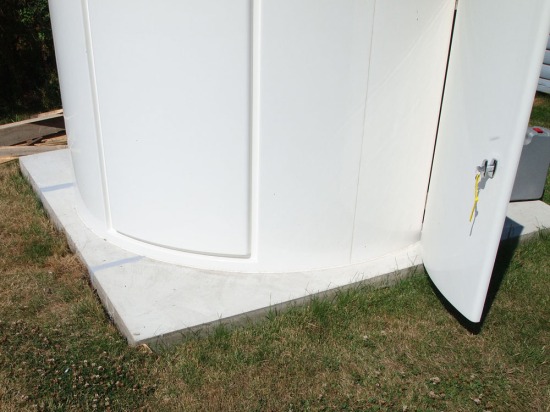
Three weeks later, when the concrete has had time to cure more fully and the timber shuttering has had a chance to shrink away from the concrete a little, all the shuttering is removed.
On our return, we were pleased to see that the timber framework had shrunk away from the fully cured concrete base and it was a fairly simple matter to pull it up – it did manage a bit of a struggle on a couple of the corners however.

The mains power system is brought to a first stage operational standard with two 13amp sockets and basic white and red lighting.
Next on the list was to get mains power operational. Firstly, with safety in mind, an earth break cutout system was fitted. Initially a basic distribution system was completed with two internal sockets and an extension (not shown) and two external sockets. Space was left to expand this system later if needed.

A simple bulkhead type fitting for white light and a children's night light from IKEA for the red light (it's too bright and will need dimming or capping).
A simple bulkhead light fitting was added to provide a utility light. Red lighting is provided by strange little wireless night light purchased in IKEA – it’s much too bright for deep-sky observing but this can be fixed easily enough with a cover – it switches on and off by simply pushing the top. It’s handy because it can be moved around and is just the right size to be stuffed into 2″ eyepiece holder holes in eyepiece racks etc.

A builders membrane (plastic sheet) was placed on top of the concrete and a foam rubber floor added. The picture shows the hole cut in the foam ready to accomodate the base of the pier.
A thin polythene sheet or ‘builder’s membrane’ was cut to size and fitted over the floor inside the dome. This is done to prevent moisture ‘breathing’ in to the dome atmosphere from the permanently damp concrete base. A 12mm thick foam floor was added. The large foam floor tiles are pre-cut to size and supplied as a kit from Pulsar Observatories. The tiles are numbered on the rear to make installation easier. The foam floor provides observer comfort in winter by insulating feet from the concrete floor but just as important, if not more so, the foam provides an impact cushion for the ever-present risk of dropped equipment! The pier was placed in position and the North/South line established. Four pilot holes were drilled to mark the exact position of the pier and a hole cut in the foam to accommodate the pier base.
The pilot holes were re-drilled deeper and expanded to 20mm to allow the fixing of 200mm long M16 studs. The holes were carefully cleaned of dust using a small piece of garden hose taped to the vacuum cleaner hose. It’s important to know exactly were your wife is located while completing this operation – preferably she should be elsewhere and amongst others. Later, when she says, I can’t understand where this fine grey dust keeps coming from every time we use the vacuum cleaner, you can say something plausible like: ‘Perhaps it needs servicing, I always said Dyson’s were overpriced now they’re made in China’. The studs were glued into position using a resin anchor system with the pier in place. The washers and nuts are added and secured loosely in the correct positions on the stud and then pressed home to cause the excess resin glue to swell out under the washers. In ten minutes (in Summer) when the resin is still in the gel or semi-stiff state the excess can be easily trimmed away with a razor knife and simply peeled off the painted pier steelwork.
The wedge was attached to the pier and the telescope installed and tested. Job done!
9 Comments »
RSS feed for comments on this post. TrackBack URI
Leave a reply to Peter Fellowes Cancel reply
Blog at WordPress.com.
Entries and comments feeds.

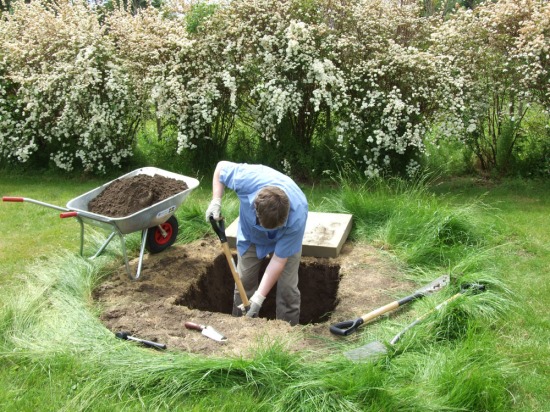


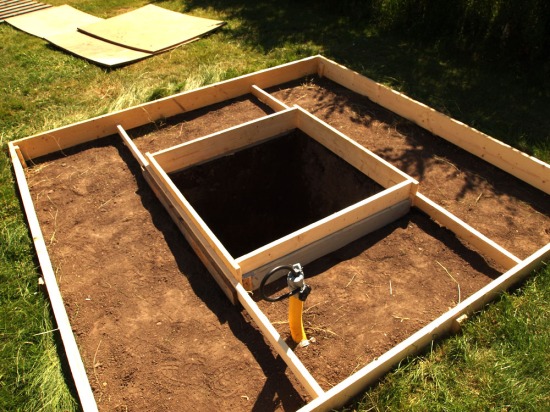

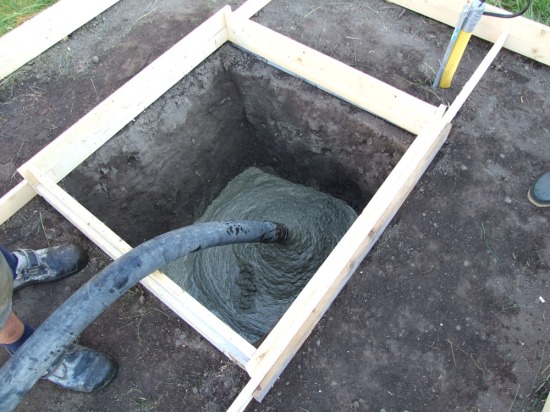



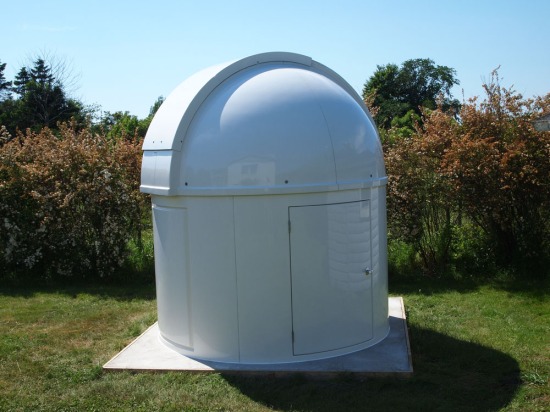



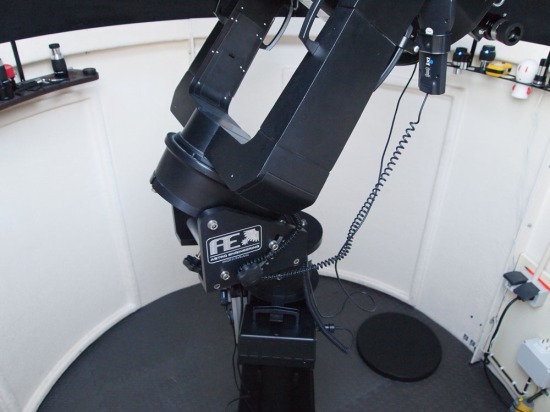


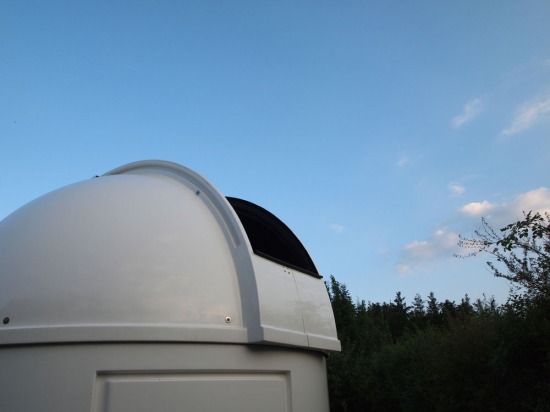

An excellent detailed blow-by-blow account of putting the observatory together. Very useful – thank you!
Greg
Comment by Prof. Greg Parker— October 7, 2010 #
That was awesome!
Comment by Henrik— October 12, 2010 #
Can you send me some info of costs for the whole project?
Need it for getting funding ( need estimates for fundraising so I know how much I need).
Comment by peter bergman— January 6, 2012 #
Peter, thanks for your comment – I’ve forwarded your query to Pulsar Optical who supplied the dome and observatory hardware – MD Gary Walker will be in touch shortly!
Best wishes
Maria
Österlen Observatory
Comment by osterlenobservatory— January 6, 2012 #
Hi Guys,
Fantastic job! Very informative and inspiring.
I am new to astronomy and I have just taken delivery of my first ever telescope (Made LX200 12″) and have decided to house it in a 2.2mtr Pulsar Observatory. Your build log and photo’s are very helpful to me, thank you.
I wish you clear skies and good luck with your observatory.
Kind regards,
Peter, Lincolnshire, UK.
Comment by Peter Fellowes— January 28, 2012 #
Hi Peter
I am in Lincolnshire and considering building an observatory I already have a scope remotely controllable – did you build an observatory and any tips
Peter
Comment by peter brier— December 21, 2012 #
What kind of 12V eliminator is that ?
I have tried to find someone like.
Comment by Björn— June 16, 2012 #
How were you able to get the equipment from England.
I bought the AC400 Wedge from Pulsar Optical and had to deliver it to my friends in UK first and have them to send it to me in Sweden. I have also tried to order the AC421 pier from them but it is not possible.
This is the answer i got:
“I am sorry but due to previous disastrous experience and the high cost of shipping and insurance we would not be able to dispatch to Sweden”
Comment by Björn— June 17, 2012 #
Hi Björn, thanks for your comments – will be contacting you off-list shortly!
Comment by osterlenobservatory— June 18, 2012 #